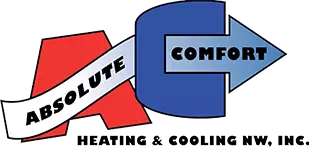Maintaining optimal indoor air quality is a crucial aspect of ensuring comfort and well-being in any building, and light commercial spaces such as small offices, retail outlets, and workshops are no exception. Inadequate air ventilation can lead to a buildup of pollutants, allergens, and excessive humidity, resulting in an unhealthy and unpleasant environment for both workers and customers. Whole home ventilation systems offer an effective and comprehensive solution to ensure the consistent circulation of clean, fresh air throughout your light commercial property. Properly managing indoor air quality can create a safer, healthier, and more productive atmosphere that promotes occupant satisfaction and enhances overall building performance.
Continue reading as we explore the main advantages of whole home ventilation systems for light commercial spaces, discuss how Absolute Comfort Heating & Cooling NW can help you select and install the most appropriate system for your needs, and outline the various factors to consider when making your decision.
1. Key Benefits of Whole Home Ventilation Systems for Light Commercial Properties
Whole home ventilation systems provide numerous advantages for light commercial spaces, including:
Improved Indoor Air Quality
By constantly removing stale, polluted air and replacing it with fresh, filtered air from the outside, these systems effectively mitigate common indoor air pollutants such as dust mites, mold spores, pollen, and volatile organic compounds (VOCs).
Allergy and Asthma Relief
Reducing indoor air pollutants can help alleviate allergy and asthma symptoms, promoting better health and well-being for building occupants.
Humidity Control
Proper ventilation assists in regulating indoor humidity levels, preventing the growth of mold and mildew that can compromise the structural integrity of your property and cause costly damage.
Enhanced Energy Efficiency
Whole home ventilation systems can contribute to a more energy-efficient building by reducing the need for heating and cooling systems to compensate for poor air quality.
2. Types of Whole Home Ventilation Systems
There are several types of whole home ventilation systems available, each with its own unique benefits and drawbacks.
Exhaust Ventilation Systems
These systems work by expelling stale indoor air, creating negative pressure inside the building, and drawing in fresh outdoor air. While relatively simple and low-cost, they may not adequately filter incoming air and might be less effective in cold climates.
Supply Ventilation Systems
Supply systems use a fan to bring in fresh outdoor air, creating positive pressure within the building. This helps to prevent outdoor contaminants from entering the property but may result in higher energy costs due to increased heating and cooling demands.
Balanced Ventilation Systems
Balanced systems combine the benefits of both exhaust and supply systems, ensuring a controlled exchange of fresh and stale air without compromising energy efficiency or indoor air quality. These systems tend to be more costly upfront but provide the most comprehensive solution.
Energy Recovery Ventilation (ERV) and Heat Recovery Ventilation (HRV) Systems
ERVs and HRVs exchange heat between outgoing and incoming air streams, improving energy efficiency and minimizing heating and cooling costs. ERVs also help maintain humidity levels by transferring moisture between air streams.
3. Factors to Consider When Choosing a Whole Home Ventilation System
When selecting a whole home ventilation system for your light commercial property, consider the following factors:
Building Size and Layout
Your property’s square footage and layout will determine the capacity and configuration of the ventilation system required.
Climate and Outdoor Air Quality
Consider the local climate and the outdoor air quality in your area, as both factors will impact the performance of various ventilation system options.
Energy Efficiency and Operating Costs
Evaluate your building’s energy efficiency goals and weigh the upfront installation cost against the long-term savings different system types offer.
Maintenance Requirements
Maintenance needs vary between ventilation system types, so be sure to consider ongoing maintenance requirements and associated costs.
4. Prioritize Unrestricted Airflow for Efficient HVAC Operation:
Our experienced technicians can guide you through the process of selecting, installing, and maintaining the ideal whole home ventilation system for your light commercial property.
Personalized Assessment and Recommendation
We will thoroughly evaluate your property and air quality objectives to recommend the most suitable ventilation system for your unique needs.
Professional Installation
Our technicians will provide expert installation services, ensuring optimized performance and adherence to industry safety standards.
Ongoing Support and Maintenance
We offer maintenance services to ensure your whole home ventilation system continues to operate efficiently and effectively, protecting the indoor air quality and well-being of building occupants.
Conclusion
Whole home ventilation systems provide an effective solution for enhancing indoor air quality in light commercial spaces. By working with our expert technicians at Absolute Comfort Heating & Cooling NW, you can ensure the most appropriate system selection, maintenance, and air conditioning service in Boring, OR, is achieved for your property. Contact us today to discuss your indoor air quality goals and discover the benefits of whole home ventilation systems tailored specifically to your light commercial property’s needs.




